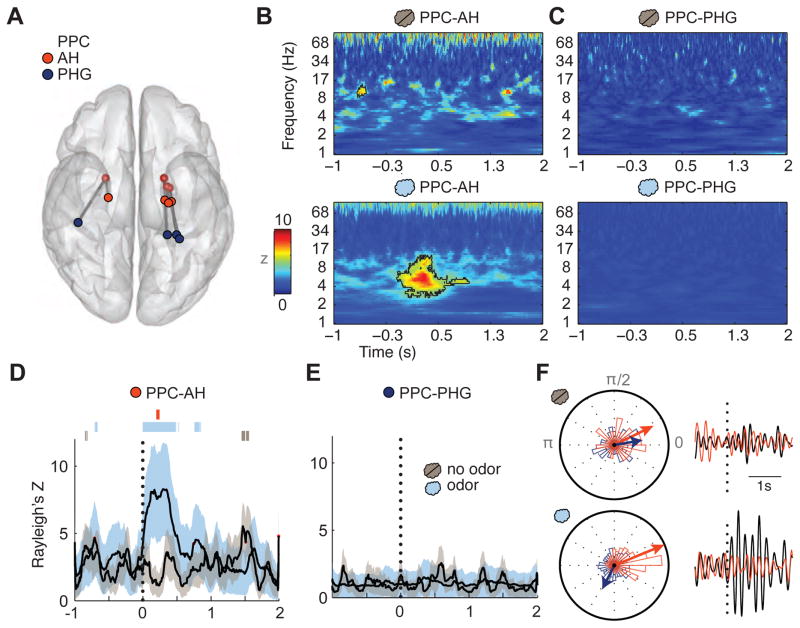Figure 6.
Odor stimulation enhances phase locking between PPC and hippocampus. (A) Schematic depiction of the electrode locations in PPC (white), AH (red), and PHG (dark blue) for the four subjects, coregistered and overlaid onto a ventral view of a transparent 3-D brain. (B) Time-frequency plots of interregional phase locking between PPC-AH shows minimal change in the PLV following control (no odor) trials (top panel), but a significant change in PLV following odor trials (bottom panel), emerging in the theta-frequency range. Significant time-frequency clusters are outlined with black contours. Data are based on all trials across four subjects. Vertical dotted line, sniff onset at time = 0 s. (C) In contrast, interregional phase locking between PPC and PHG showed no evident change in either the no-odor or odor condition. (D–E) The PLV time-series, restricted to the theta-frequency range (3–7 Hz), reveals that odor stimulation induces a sniff time-locked increase in coupling between PPC and AH (D), but not between PPC and PHG (E). Error lines indicate the S.D. of the PLV resampling distribution. Bars above PPC-AH plots in D: significant time periods for odor PLV (light blue), no-odor PLV (grey), and odor vs. no-odor PLV (red). (F) Circular histograms of the trial-wise phase differences between PPC-AH (red) and PPC-PHG (dark blue) for no-odor (upper left) and odor (lower left) conditions. Vector direction indicates mean phase across trials for each condition and pair, with vector length scaled linearly by circular variance; thus, for conditions in which there is lower variance, or higher consistency, across trials, the vector length is longer. Right panels: examples of single trial theta-filtered oscillations for PPC and AH (Subject 2, black and red, respectively), aligned to sniff onset, are displayed for no-odor (upper right) and odor (lower right) trials, suggestive of enhanced odor-induced theta coupling between these regions.

